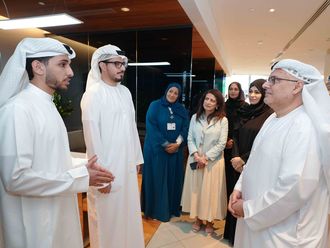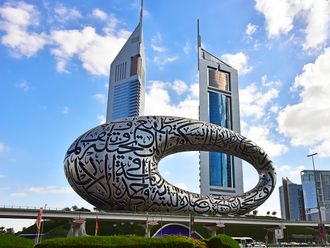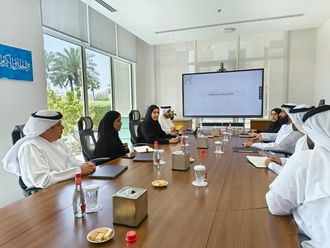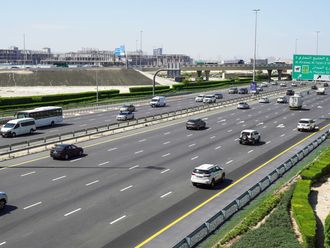Twelve years ago, Dubai International Airport handled a cargo volume of 100,000 tons a year.
On May 26, 1991, the Cargo Village opened next to the main airport building with four aircraft bays to accommodate 747s.
Today, the village handles a staggering 850,000 tons of cargo a year and can cater to 17 aircraft at one time.
Ali K. Al Jallaf, Director of the Cargo Village, says in the 1980s, the volume of air cargo started growing, and the airport wanted to compete globally. "The cargo volume then was roughly 50-80,000 tons a year and comprised mainly imports. Re-export was a small percentage.
Construction of the village started in 1990 and it was completed in 14 months at a cost of $75 million. In 1991, the village handled 10 cargo-dedicated airlines and today there are 25. But around 100 use the terminal.
With a cargo growth rate of 15 to 16 per cent a year, the village, as Al Jallaf stresses, is certainly doing things differently. While Singapore, Hong Kong and a few other nations do have dedicated cargo terminals Dubai airport is the only one in the Middle East to have such a facility.
"In the early days, we handled cargo such as electronics, household goods and auto spare parts. But today, you see almost everything."
The village is a reflection of Dubai's rapid growth, for in 1991 it was designed to handle a capacity of 250,000 tons of cargo a year. This target was to be achieved by 1997. However, in a mere three years the goal was met.
But this was just the take off run: the village had crossed the critical point or the point of no return. The ship was now to fly high. In 1995, the village went into over capacity and expanded to handle 350,000 tons a year. The story was repeated four years later, when the village saw a cargo volume of over 490,000 tons.
And as part of the expansion plan the authorities conducted a study in 1998 to set up the Emirates Sky Cargo Terminal.
Two years later it was operational. But Al Jallaf, says they were thinking beyond the near future. The growth rate demanded a long-term plan till the year 2020.
"The existing cargo terminal can handle about 350,000 tons a year, Emirates Sky Cargo another 300,000 tons and the Express Mail centre 50,000 tons.
"We also plan to build a flower centre by the end of next year and in 2006, we shall set up the first mega terminal which will be able to handle 1.2 million tons of cargo a year, taking the total capacity to 2 million tons.
"2011 will see the second mega terminal with a capacity of 1.2 million tonnes besides two multi-storeyed car parks which will be built in two phases."
The final phase in 2015 will witness the demolition of the Emirates Sky Cargo terminal and the construction of the third mega terminal, which will again be able to handle another 1.2 million tons, taking the total capacity to 4 million tons, with the flower centre being operational.
Al Jallaf adds that they will also change the road network and build a second gate to ease the flow of traffic from one point to another. Construction will start next year on this project. And what is the secret of this resounding success, an endeavour that has seen ambitious projects every few years?
Al Jallaf says there are four factors.
* Dubai is very strategically located, which helps boost trade.
* Airlines are attracted to the emirate because of the excellent facilities and services.
* The business atmosphere in Dubai is very conducive, which attracts players from various industries.
* The success of Emirates airlines has led to the success of the village.
The village today employs about employs 3,000 employees and is spread over an area of 24,895 square metres.
Success story of the Cargo Village
Twelve years ago, Dubai International Airport handled a cargo volume of 100,000 tons a year.











